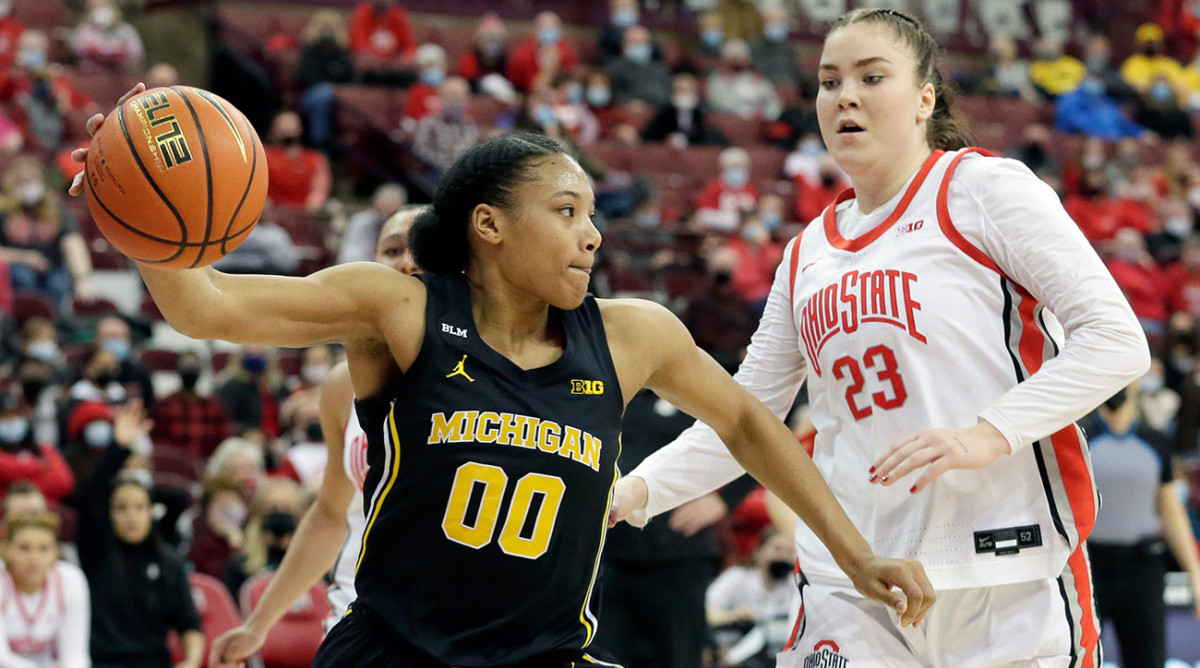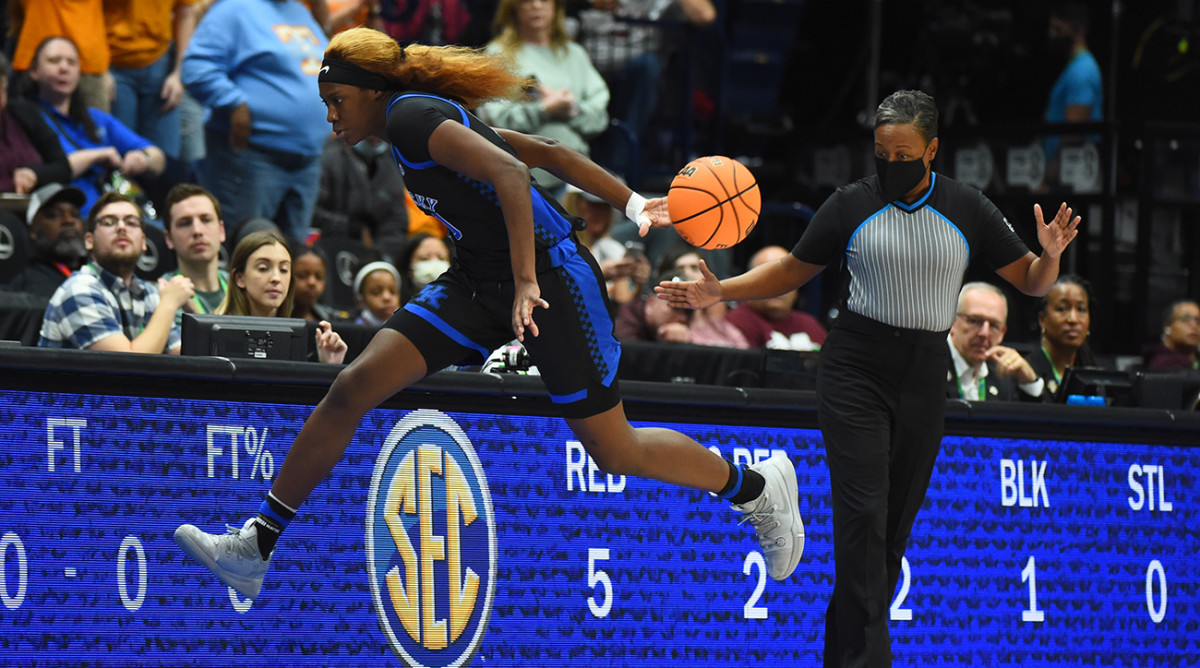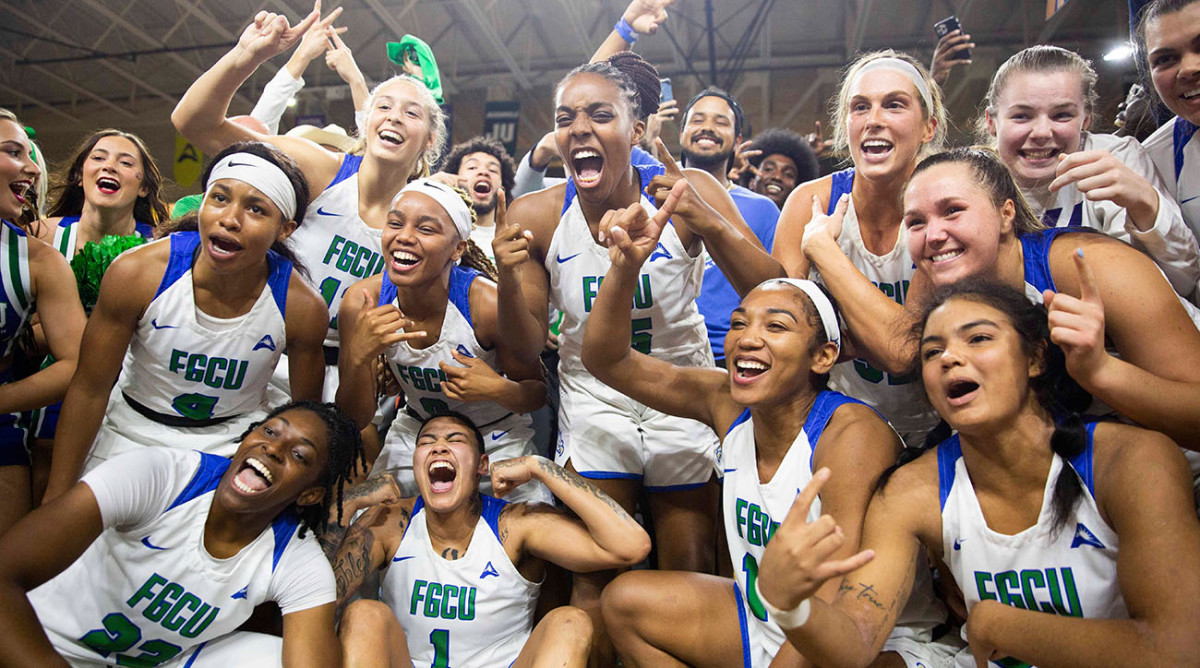Cinderella Stories: Sleeper Picks for the Women’s NCAA Tournament
In the women’s NCAA tournament, No. 1 seeds usually reign supreme. In the first 39 years of the event, 87 of the 156 (55.7%) top seeds have made the Final Four, with at least two No. 1s reaching the third weekend in 33 of the 39 competitions. Still, with an expanded field and increased parity across the sport, it wouldn’t be entirely shocking to see a number of other teams crash the party in Minneapolis.
The list below includes eight teams that could—to varying degrees—make a deep run in March and find their way to the Final Four. Some of the sleeper selections are more realistic, while others would make for true Cinderella stories. (Note: No. 2 seeds were also removed from this exercise because picking any one of them isn’t exactly a huge surprise.)
Not total shockers
Michigan (No. 3 seed, Wichita region)

Never in the history of the Wolverines program has the team advanced to the Final Four, but this year’s group has as good a chance as any to break that streak. Led by senior forward Naz Hillmon, coach Kim Barnes Arico’s group plays a tough, physical style and is also tournament-tested. Hillmon averaged 21 points and 9.4 rebounds per game this season, while shooting 56.5% from the field. She is a force from inside the arc, where she averaged 7.9 made two-point field goals per game, eighth best in the country, and 4.4 offensive rebounds per game, fourth best in the nation. The Wolverines already defeated Baylor, the No. 2 seed in the Wichita region, earlier this year. And while they struggled in a 22-point loss to Louisville in December, they outscored the Cardinals in the second half of that contest. Moreover, Louisville has lost two of its last four games and looks to be the shakiest of all the No. 1 seeds. The Wichita region could see a number of upsets, opening the door for the Wolverines.
Indiana (No. 3 seed, Bridgeport Region)
Want another Big Ten team capable of making a deep tournament run? Indiana is a name worth watching. The Hoosiers are coming off their first conference championship game appearance in 20 years, looking impressive in tournament victories over Rutgers, Maryland and Ohio State. Coach Teri Moren’s team relies heavily on its juniors and seniors, with its backcourt of Grace Berger, Nicola Cardona-Hillary and Ali Patberg being the kind of trio no opponent wants to face.
Last year, IU advanced to its first Elite Eight in program history, beating top-ranked NC State to do so. Among the potential carryovers from that game was how Moren adjusted her rotations—no Hoosier played more than six minutes off the bench and four reserves combined for just 15 minutes. The Wolfpack did avenge that loss early this season, but it wouldn’t be shocking to see Indiana stifle Elissa Cunane & Co. yet again. A possible matchup with UConn in the Sweet 16 also looms large, but if there was ever a group that wouldn’t be fazed playing so close to the Huskies’ home, it would be veteran-laden IU.
Iowa State (No. 3, Greensboro Region)
The Greensboro region is South Carolina’s to lose. But if you’re looking for another team that could make its way to Minneapolis, look no further than Iowa State. Senior wing Ashley Joens, who averaged 20 points and 9.2 rebounds game on career-best 37.2% from the three, led the Cyclones to a school-record 25 wins this past season. And ISU has three players, Joens, Emily Ryan and Lexi Donarski, who made the All-Big 12 first-team (though 10 players received first-team honors). Donarski was also named the conference’s Defensive Player of the Year.
While the college basketball world seems to be eagerly awaiting a possible matchup of the country’s two top performers in South Carolina’s Aliyah Boston and Iowa’s Caitlin Clark, Iowa State could crash that party. The Cyclones already beat the Hawkeyes this season, and the two teams have comparable profiles. (Both, for instance, have two of the five best offenses in the country, and they are No. 7 and No. 8 in HerHoopsStats’ team rating.) Is Iowa State the most likely choice in the region to advance to the Final Four? No, but wilder things have happened.
The popular sleeper
Kentucky (No. 6, Bridgeport Region)

No one in the women’s college basketball world is sleeping on Kentucky, considering it ran through the SEC tournament and defeated top-ranked South Carolina to take home its first conference title in 40 years. Nevertheless, the Wildcats’ reaching their first Final Four in school history would still constitute a true Cinderella run. Led by star guard Rhyne Howard, Kentucky opens its tournament against Princeton (more on that team later). While the matchup is certainly difficult, the Bridgeport region feels like one of the more open ones in the bracket. A possible second-round game vs. Indiana would be thrilling, as would a Sweet 16 matchup vs. UConn. The path to Minneapolis is difficult, but the Wildcats have proved they can excel in the most important games of the season. They could do it again.
Paging Cinderella
Gonzaga (No. 9, Wichita Region)
While college basketball fans are buzzing about the Gonzaga men’s basketball team possibly reaching another Final Four, the Gonzaga women’s team is one of the most appealing sleepers in its bracket. Winners of both the WCC conference regular-season and tournament titles, the Zags feature incredible depth—seven players average between 18.8 and 25.6 minutes per game—and don’t rely on any single player to carry the load. No one averages more than 11 points per game. Instead, the Bulldogs play sound basketball on both ends of the floor. Per HerHoopsStats, Gonzaga is in the top 20 nationally in both offensive and defensive rating. It is also No. 12 in the outlet’s aggregate team ranking. Key to a potential deep run in March, the Zags limit opposing teams from three-point range, holding them to 27.1% shooting from deep, and they make their free throws on offense, shooting 77.2%. On Nov. 21, the Bulldogs led Stanford at halftime and trailed by just one with 2:36 to play in the game. While they eventually lost by four, and fell again to the Cardinal weeks later, it was the kind of performance indicative of what they could do in the NCAA tournament.
Gonzaga meets Nebraska in the first round and could put Louisville on immediate upset watch in the second round. If the Wichita region breaks open, they have some potential to be one of the biggest surprise beneficiaries.
Princeton (No. 11, Bridgeport Region)
The Tigers’ opening game versus Kentucky might be the most interesting matchup of the first round, and, if the Tigers can prevail, they have all the makings of a tournament sleeper. Per HerHoopsStats, Princeton is No. 5 in the country in defensive rating, holding opponents to just 50.9 per game. It has won 17 consecutive games and went undefeated in Ivy League play. As important to their résumé, the Tigers also picked up nonconference victories over Villanova, FGCU, Buffalo and Temple. Their style of play is disruptive, forcing 19.4 turnovers per game, and makes up for the fact that forward Ellie Mitchell is their tallest starter, at just 6'1". They entered the Ivy League conference tournament at No. 24 in last week’s AP poll and would have likely made the dance even without beating Columbia on Saturday, a victory that marked their third consecutive conference title. If they advance out of the first round, they could have to play IU, Connecticut and NC State. Still, Princeton’s defense alone will make the team a tough out.
Early-round noise
FGCU (No. 12, Spokane region)

Few teams in the country have exhibited the kind of offensive firepower that the Eagles have. Winners of 26 games this season, FGCU leads the nation in three-pointers attempted and ranks second in three-pointers made. And despite that high volume, the Eagles take care of the basketball, averaging only 11.3 turnovers per contest. Now, in its fourth-consecutive NCAA tournament appearance, FGCU is still looking to get past the first weekend of action. But with this being guard Kierstan Bell’s last chance to do so—she has already declared for the April WNBA draft—there could be an added pressure to go on a run.
Bell played in only 19 games this season after missing a month with a partially torn meniscus. While she has logged five games since returning from injury, she shot below 30% from beyond the arc in three of the contests, a troubling mark for a player who averaged 9.3 attempts per game. Still, any offense that records more than 75 points per game and can stretch a defense the way the Eagles can can’t be counted out. First-round opponent Virginia Tech makes for a bit of a stylistic clash, as the Hokies lean on ACC Player of the Year Elizabeth Kitley in the paint. Possible second-round foe Maryland could also make for a tough game if both teams advance. Of all the teams we’ve mapped out as sleepers, it’s especially hard to imagine FGCU in the Elite Eight (as doing so would also entail beating Stanford), but the Eagles could make some noise early on.
No. 12 Stephen F. Austin (No. 12, Greensboro Region)
Like FGCU, it’s tough to see Stephen F. Austin advancing past the Sweet 16—the Ladyjacks would potentially have to beat South Carolina to do so. But the team could possibly advance to the second weekend. Winners of both the WAC regular season and conference tournament, the Ladyjacks have one of the country’s top defenses. They allow just 76.3 points per 100 possessions, fifth-best in the nation. While the offense is not as prolific as that of some other mid-majors, seniors Stephanie Visscher and Aiyana Johnson still both average more than 14 points per game. First-round opponent North Carolina also features one of the top defenses in the nation, but it wouldn’t be shocking to see the Tar Heels’ offense grounded to a halt. Potential second-round opponent Arizona additionally appears not to be as dangerous as it was last year, with lead guard Aari McDonald having turned pro.
More March Madness Coverage:
• Women’s NCAA Tournament Bracket Breakdown
• What We Learned From Women’s Conference Tourneys• SI’s 2021–22 Women’s All-Americans
